Neighbor Spotlight
June, 2018
Marilyn Derocher
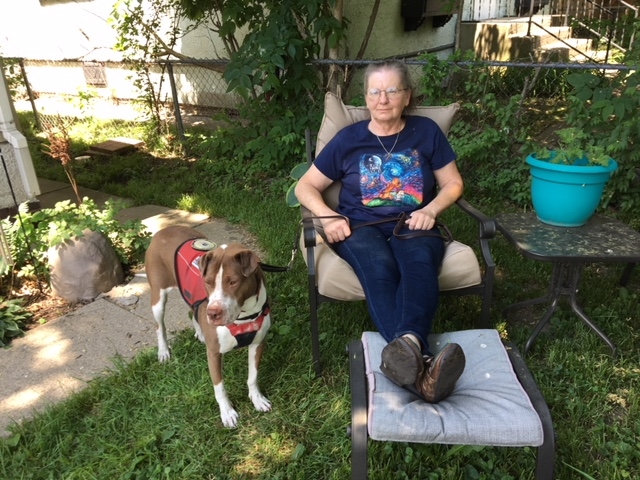
Marilyn Derocher could have never imagined the impact on her own life and the lives of others around her when she moved to Indy’s Mapleton Fall Creek neighborhood six years ago. But that is just what happened. To understand the transformation, Marilyn shares how she got there.
Growing up, Marilyn was a bright student who advanced in school beyond her years, but socializing was very difficult. Marilyn served many years in the military and raised a family of six children. When she developed post-traumatic stress disorder (PTSD), her difficulties increased, as the PTSD manifested itself in a growing distrust.
Marilyn looks to the dragonfly as a symbol of the growth and transformation in her own life – and in her neighborhood. She notes, “The dragonfly begins life as a water nymph and remains in that state for several years before it goes through a metamorphosis, emerging to develop into a dragonfly, becoming a creature of air with diamond-dusted wings.” While navigating the challenges of learning to live with PTSD and driving 120 miles a day to take her youngest son to and from a specialized school for children on the autism spectrum, Marilyn said “I was inspired to look for joy in the journey.”
She began looking for a place to live in the neighborhoods near her son’s school. “My focus was not so much a house, but on whether people were outside and what they were doing. I found myself continually drawn back to one street in Mapleton Fall Creek.” It took a year, but she did find a home on that street that fit her family and her budget and met her son’s education needs. Still terrified and far from family, she commented,
“I was a foreigner in a foreign land, a stranger, and I looked up to the Great Spirit and said, ‘How do you want me to serve the people?’. After some silence and some concern I would never find the answer, the answer came: ‘Be Yourself.’”
That helped her to move forward and get to know her neighbors.
In the spring, she started picking up trash in the street. When a neighbor joined her, the neighbor was disappointed more people weren’t participating. Marilyn reassured her that the neighbors will come. And they did come, and continue to come, creating a growing sense of community.
Four years later, Marilyn was stunned when her neighbors, who barely knew her oldest son, came to his funeral and later to a Memorial Tree planting. A neighbor told Marilyn, “You have no idea how you touched my heart”, because through Marilyn’s loss and how she dealt with her loss, the neighbor had come to see her own tragic loss in a new way.
Another day, after hearing tragic news, Marilyn went to console and comfort a neighbor who had lost her grandniece. This woman turned to another neighbor and, referring to Marilyn, said “You know, she lost her son. We need to take care of her; she’s family you know.” Marilyn was shocked: “What? I’m family? This is extraordinary. This is beautiful. I have family!”
For Marilyn, it helped her see how intertwined and integrated we can become –how we touch each other’s lives and sometimes never even know it. People returned to being genuine, authentic, caring, and connected human beings. Her kids say they have never known so many open-hearted people.
Marilyn is learning something new every day and finding abundance in a welcoming community. As she is helping to create a supportive, engaged community in her neighborhood, it is transforming her life too.
Marilyn sees herself as that dragonfly, emerging from her metamorphosis to become the engaged, social, and concerned neighbor, and it all happened because she took a chance, stepped out of her comfort zone, and saw the opportunity to engage. The neighbors are her family, as she is theirs.
Photo Caption: “The Lady with the Dog”: Marilyn, with her Registered Service Dog Daisy Mae, who is always by her side. Photo taken in her Neighborhood.
March, 2018
Ruth Soper
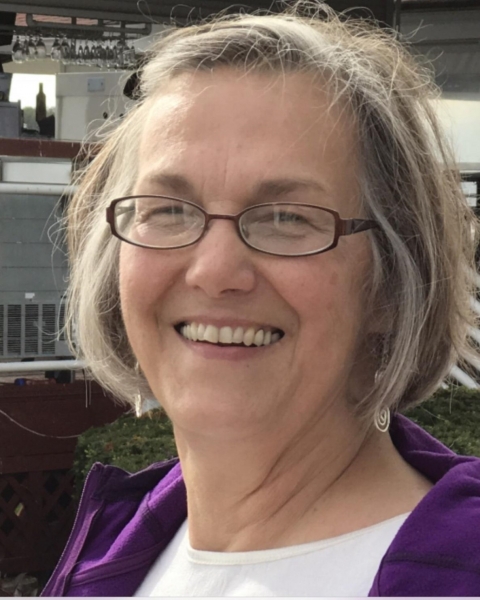
Community brings a sense of identity to its residents and is a place where people live, dream, and raise their families. This is the mindset of Ruth Soper. Helping others has always been part of her DNA. Many years ago, as a young nurse she served as a Volunteer in Service to America (VISTA) volunteer for an area in rural Arkansas and realized how she wanted to live her life; helping build community.
Living in the University Heights area, just south of University of Indianapolis (UIndy), Ruth is a member of the University Heights Neighborhood Association (UHNA). The association went through a re-start in 2009. As part of this effort, new by-laws were established which created Co-Coordinators instead of a President. Ruth stepped up to fill one of these positions.
An early success for the group was the creation of a pocket park, University Heights Community Park, located on Edwards and Mathews Streets. This park was created in collaboration with Keep Indianapolis Beautiful and is maintained by the Neighborhood Association. In the last couple of years, a shelter has been erected in the park. Twice a year, the residents work to clean-up, weed, and add mulch to the park.
As Co-Coordinator at UHNA, Ruth helped start neighborhood porch parties. These porch parties are now held in several homes on different blocks in the neighborhood as a way to connect and build relationships between residents. In addition, an annual “Halloweenie Roast” is held every October to bring neighbors together for food and fun.
Serving as the lead for a project for the neighborhood, Ruth was able to see a major improvement in the area. UHNA, partnering with UIndy, the City of Indianapolis-DPW, and the Indianapolis Fire Department, came together to address the issue of narrow streets in the area. With parking allowed on both sides of the streets, emergency vehicles could not properly access those streets. This also caused a hazard to anyone trying to cross between streets, especially students walking to classes. By working together, the partnership was able to change parking rules and improve the signage. Parking is now only allowed on one side of the streets in most of the area.
In 2015, along with UHNA, Ruth became involved with the Southside (SoIndy) Quality of Life Plan. This plan includes 8 neighborhoods. Ruth has served as a member of the original Steering Committee, and most recently as a board member for SoIndy. Ruth states, "A few years ago I retired from a very satisfying career in healthcare. Since that time I have helped create the South Indy Quality of Life Plan and feel like I am doing the most important work of my life….improving the health of my community”.
Early on, Ruth told herself that after retirement she would commit to serving the next 10 years to the SoIndy project. As part of her commitment, Ruth participated in the Indianapolis Community Building Institute (ICBI), offered by INRC. Ruth has thoroughly enjoyed her time spent in the Indianapolis Community Building Institute (ICBI). “One of the most impactful trainings ICBI offered was learning Project Management skills that we can use in our South Indy Quality of Life work,” explained Ruth.
Since attending ICBI, she and her neighbors are collaborating with like-minded people from different Indy neighborhoods and cultures. “Growing up in my culture can make me biased and lead to a prejudice I didn't even realize. ICBI has helped me realize this now and I have learned how to identify those prejudices,” said Ruth. Working to re-clarify her top three values has caused Ruth to reflect on what is really important to her. Ruth believes, “Working one-on-one to build personal relationships is the most important thing to the health of a community”.
Most recently, SoIndy QOL received the Building Local Community Award at Neighbor Power Indy. Ruth, along with the South Indy Quality of Life action teams, implemented many activities in 2017, including: hosting a job fair in collaboration with area businesses and service providers; promoting the Garfield Park Farmer’s Market’s SNAP program, resulting in a 50%+ increase in transactions and sales; creating the Madison Avenue Economic Revitalization Study RFP; and organizing 17 community-wide events at 12 SoIndy business/organization locations.
February, 2018
Dervin White
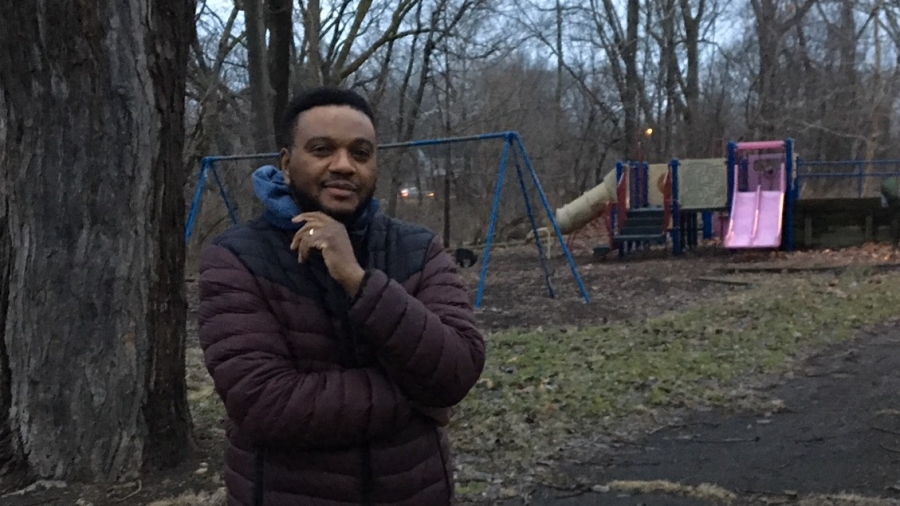
When Dervin White got married in 2010, he moved to his wife’s neighborhood, Meridian Highland. Both his wife, Sharlett, and her mother, Sarah Calvin, were active in the Neighborhood Association – Sharlett was on the board, and her mother was engaged with many neighborhood projects. Dervin and Sharlett, through pastoring a church in the neighborhood, quickly saw how his neighbors could both help and be helped by working on and in the neighborhood. Dervin jumped in and became president in 2012.
What really opened Dervin’s eyes to his neighbor’s power, though, was when a developer came to the neighborhood to get (and expected to get) approval to open a gas station. The neighbors, however, had other ideas. Their unified efforts kept the gas station out, and Dervin gained a new vision of what could be possible.
Dervin had always looked at success as “numbers, volume, and participation, but seeing the neighbors come together and keep out the gas station, I saw success could come in more indirect ways.” Referencing the Biblical “army of Israel was one,” Dervin noted that success came this time from “the neighborhood becoming one.”
Today, “the spirit of the neighborhood is different. There are fewer gun shots and more community engagement.” Through Crime Watch, IMPD helped them understand the value of calling 911 and shared neighborhood tactics to reduce crime. They started doing prayer walks. This got neighbors out on the streets to know each other, and showed they cared about their neighborhood, which made a difference.
With the IndyGo Redline expected to go through their neighborhood, the area has attracted more developers. One expected to get quick approval to build a storage unit facility that would eliminate a long blighted building…. What the developer received instead was lots of questions from concerned and engaged neighbors.
Dervin noted that, “while surprised, the developer, to his credit, welcomed the dialogue” and came back to neighborhood meetings and even to their picnics. In this way, he learned what the neighbors wanted, and the neighbors learned they could work with a developer for the betterment of their neighborhood.
That dialogue “helped the developer see the human side of putting a storage unit in a residential area.” The residents asked, “How will this benefit us?” When this proposal came, they didn’t just say yes. They wanted to think through how they could create an even greater asset in the neighborhood. After much dialogue, the result was the storage building would be become mixed use, adding space for businesses to lease as well as a meeting/conference space, that residents will be able to use.
Dervin noted, “30 residents spoke up, and they came out winners.” They gained confidence as they realized their voice could make a difference in the outcomes of the neighborhood.
Dervin attributes part of his success to participating in INRC’s Indianapolis Community Building Institute (ICBI) in 2011, which provided him with tools, ideas, and techniques for engaging with neighbors and improving their neighborhood. Dervin, along with his fellow neighbors, are creating opportunities to gather, talk, eat, and get to know each other, leading to a stronger, more closely-knit community. They have planned and hosted successful National Night Out events, picnics, and more. One marker of how much progress the neighborhood has made is that in November 2017, Mayor Joe Hogsett presented Meridian Highland with a Mayoral Proclamation of Neighborhood Achievement.
Through his neighborhood work, Dervin has learned:
1. How to multi-task
2. To have faith in things working out
3. To prioritize
4. To plan
5. To understand that some challenges are curable, and those can be tackled and overcome. Others cannot, however, so that requires a different look to bring about improvement, without expecting the impossible. Knowing the difference can help set realistic expectations and engage more effectively.
Going forward, with their successes and lessons learned, Dervin hopes to empower neighbors even more by encouraging them to form small teams to get involved in a neighborhood event, program, or other opportunity in the surrounding area or City and then report back at an association meeting. He also focuses on interpersonal skills, emphasizing “the need to be aware of how you engage others and be sure to respect each other, even if someone is overbearing. You can’t expect to change that person, so find a way to connect for the sake of the others in love.”
December, 2017
Gary Lynch
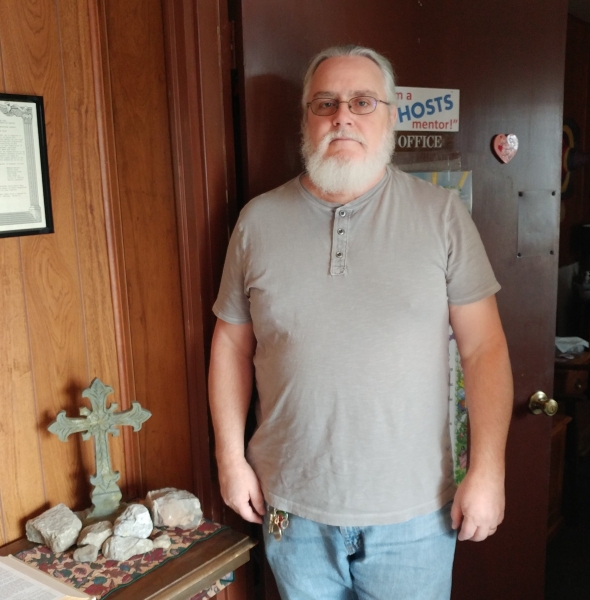
There are more than a few “great loves” in Gary Lynch’s life. One is working with residents in his Drexel Gardens neighborhood, an area located between Sam Jones Expressway, Minnesota Street, Lynhurst Drive and I-70. The neighborhood has changed over the years. Once a small rural community where each house had a separate adjacent lot for a garden, inspiring the community name of Drexel Gardens, it is now a bustling urban neighborhood.
In 2004, Gary came to the neighborhood as the pastor of Drexel Gardens Christian Church. At the time, the neighborhood and church were experiencing general vandalism in the area, with rocks being thrown through church windows. Something had to be done and Gary knew he had to reach out and start building relationships with his neighbors.
Gary is a graduate of the Indianapolis Neighborhood Resource Center’s (INRC) leadership program, Indianapolis Community Building Institute (ICBI). Through the training Gary learned, “Everyone has gifts, skills, and talents. We need to depend on each other.” This is how Gary looks at his neighborhood: Find the local resources, make those connections, and talk with each other.
Six years ago, Gary helped form the Drexel Gardens Crime Watch, and it is still going strong today. The group hosts bi-monthly meetings, a National Night Out event, an annual area clean-up, and the Drexel Gardens Community Day. Last year’s Community Day featured food, games, and a dunk tank. Over 100 persons, including local officials participated in Community Day.
In addition to Gary’s involvement with the crime watch, he joined the Decatur Township Drug-Free Coalition to help address the drug overdose epidemic that his community is facing. The Decatur Township Drug Free Coalition exists to prevent and reduce substance use among youth in the community by providing proactive education and sustainable strategies through mobilization of community resources. In September of 2017, the Coalition was awarded the highly competitive Drug-Free Communities Support Grant from the White House-Office of National Drug Control Policy, which will continue to support the work the coalition is doing to combat the substance abuse issues in their neighborhoods.
In June of 2017, the Coalition conducted a social services and quality of life door-to-door survey campaign in order to better understand the issues in the area and the priorities of the neighbors. The neighborhood enhancement project targeted an area of the Mars Hill community between Kentucky Avenue and West Mooresville Road. Based on his experiences and prior training at INRC, Gary was able to have the group focus on the positive aspects of the neighborhood.
The survey included questions that focused on the area’s assets. Members asked neighbors questions such as: What gift, talent or ability do you have that can make your neighborhood a better place?’ And, ‘How can you share your talent to improve the quality of life in your neighborhood?’
As a presenter at Neighbor Power Indy this past March, Gary served on a panel with the topic, Treat Your Neighborhood like a Temple. He shared the work of his church and the local community, initiatives the church has implemented, and what he and the community have learned. Gary stressed the importance of building relationships and partnering with the neighborhood.
There is still more to be done in the Drexel Gardens neighborhood, but progress has been made. Gary knows most people in the area, and his work with residents and the church, the crime watch is growing. If you visit the church, you will see a table in a corner that has a pile of 5-6 big rocks on it. To Gary, this is a reminder that there are no longer any broken windows in the church. Trusting your fellow neighbor, building relationships, and being a part of the community is the answer.
November, 2017
Brent Bowles
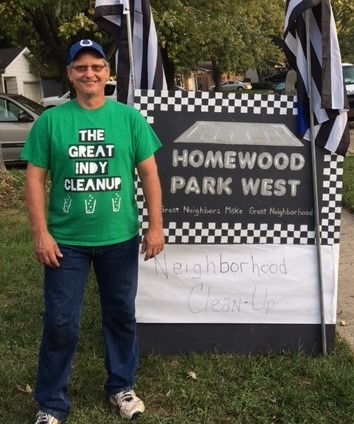
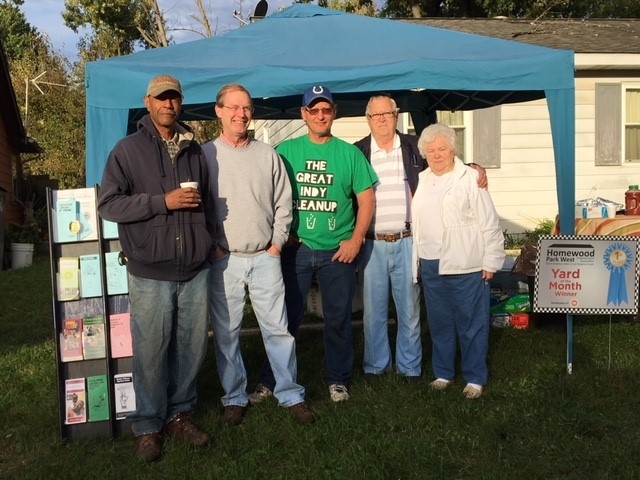
When Brent Bowles, a seven-year resident in Homewood Park West, told a neighbor he wanted to start a Crime Watch and shared some of his ideas, the neighbor said “It can’t be done….No way you’ll get this many people to agree to anything.” But Brent didn’t take no for an answer, and he quickly found some community-based assets (Next Door App to invite neighbors to and a local church to host a neighborhood meeting) to help him get started.
Brent explained, “The neighborhood was being dragged down by poor curb appeal and lack of safety.” So Brent worked with his neighbors to develop a “Neighborhood Yard of the Month” program to showcase the well-kept lawns and to emphasize beautification efforts, with recognition provided by a yard sign, an article in the neighborhood newsletter, and a restaurant gift certificate from their neighbor, the International Marketplace Coalition. In addition, getting outside, knocking on doors, being friendly and politely asking “Can we help you?” “Are you lost?” helped drive out those involved in illicit activities. Working with neighbors and reaching out to and building relationships with City government staff, elected officials, and nearby neighborhoods, they shut down a petition to put a used car lot in the neighborhood and forged bonds among multiple neighborhoods, expanding opportunities for collaboration in the future.
In 2017, Mary Chalmers, Neighborhood Development Specialist (NDS) at INRC, encouraged Brent to share their neighborhood story at Neighbor Power Indy 2017. For Brent, doing such a presentation and creating a PowerPoint were new experiences. With some guidance from the NDS and participation in an INRC presentation training, Brent and a neighbor put together a powerful presentation. The feedback and questions indicated that others were interested in developing similar opportunities for their neighborhoods. For Brent, he noted, “I’ve never done that before …. Now I am much more confident about how to do it.”
When asked to comment on what he has learned through this ongoing journey with his neighborhood, he commented, “The City, the MAC, IMPD, businesses – everyone has those resources, but you have to do the footwork to see what is applicable to your neighborhood.” As Brent has seen first hand, finding and focusing on Asset Based Community Development can lead to many unexpected opportunities and benefits. Brent said his main goal in getting involved was to maintain property values and protect the investment in his house, but along the way he found new friends, and together they have created a more vibrant community.
Brent’s three “Take Aways” from his experience with starting a neighborhood association:
- Foster collaboration
- Look around and mobilize existing (and local) assets
-
Support grass roots leadership skills: It’s about “A neighborhood working together, not a dictatorship."
October, 2017
Shirley Larner
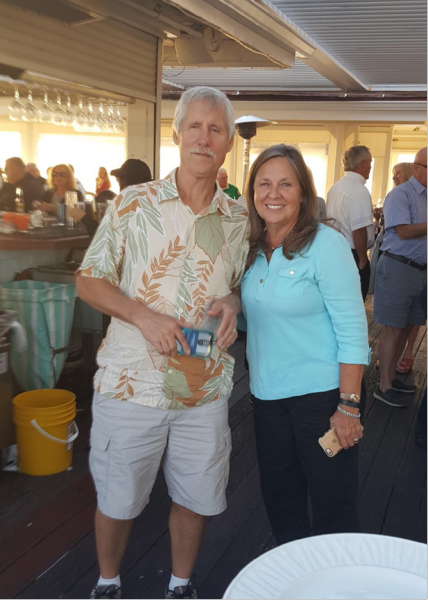
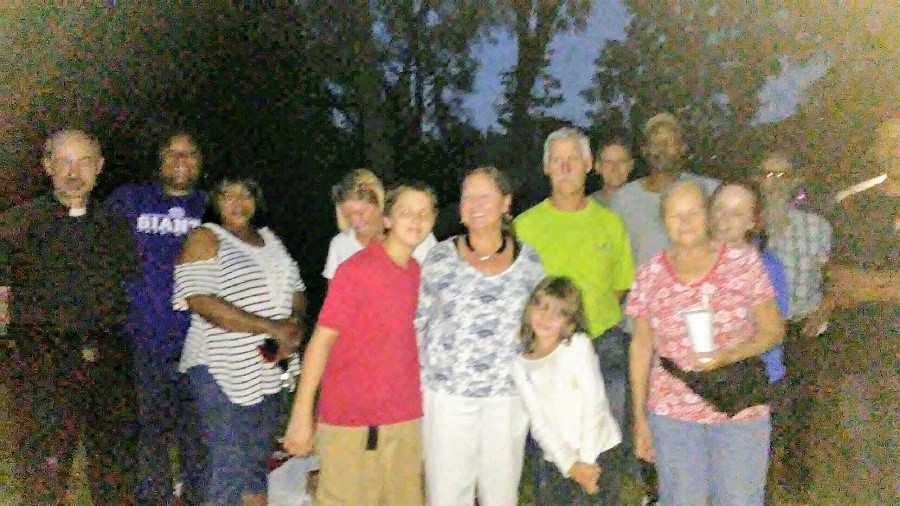
Shirley Larner grew up on the Near Eastside of Indianapolis on Tacoma Avenue. Her fond memories of the community fuel her fire to create and support efforts that positively engage her neighborhood and the surrounding residents and communities.
As the acting President of the Westminster/St. Philip Neri Neighborhood Association, previously known as TEAR United, Shirley looks beyond what many would see as debilitating issues. Instead, she sees opportunities to connect and engage with neighbors and businesses in the community nestled between Michigan, Rural, Washington, and Beville. She and her husband, Tim, have dedicated long hours to beautification efforts and increasing pride in the community. Shirley was instrumental in planning Neighborhood Cleanups and arranging for IMPD presence during a mobile roll call right on Tacoma Avenue.
On September 23, Shirley participated in the Arsenal 5K Run and Walk to raise money for college scholarships for area seniors and support extracurricular clubs at Arsenal Technical High School. Shirley is passionate about putting her time and energy into the work that lifts and defines the entire community.
When Shirley met Ashlee Weaver of INRC in January 2017, she was just stepping into her role of re-engaging the community. Through meetings, coaching, and technical assistance, INRC has supported Shirley’s efforts. Ashlee designed flyers in English and Spanish to assist in the vision of an inclusive neighborhood. Ashlee also connected Shirley with other organizations in the area, including the Englewood Community Development Corporation. The Westminster/St. Philip Neri Neighborhood Association now meets regularly on the first Monday of the month, at Englewood Christian Church, from 5:00-5:30pm.
We at INRC are so proud of Shirley’s efforts and look forward to a successful and vibrant future for the Westminster/St. Philip Neri community!

